Oh, the joy of bird song on a quiet morning, the burst of color as a flock takes flight in the afternoon sun, and the simple delight of observing these winged wonders in their daily routines. Or maybe you're awake until 4am and can hear their calls as a time to go to bed. No judgements! If these moments of pure connection with nature are what you crave, crafting a bird-friendly no-lawn garden can be your canvas. Here, we delve into the heart of design strategies and plant choices that can transform your green space into a bustling avian paradise.
The Multi-Layered Approach
Creating layers in your garden isn't just about aesthetics; it's about recreating the variegated structure of a bird's natural habitat. Canopy trees, mid-level shrubs, and low-growing plants or ground covers all provide different species of birds with suitable nesting sites and offer them protection from predators.
TOP (CANOPY) LAYER
Towering native trees such as the White Oak (Quercus alba) and the Red Maple (Acer rubrum) are vital components in crafting a bird-friendly, no-lawn garden.
The White Oak is especially valuable as it supports a vast array of caterpillar species, which are a crucial food source for birds, particularly in the breeding season when they need protein-rich food for their young. Notably, native oaks are known to support over 500 species of butterflies and moths!
The Red Maple, with its distinct red flowers and winged fruit, is also a caterpillar-friendly tree. Its seeds provide sustenance for various birds including the Wild Turkey and Evening Grosbeak. Plus, the tree’s dense crown makes it an attractive nesting site for birds like the Red-tailed Hawk and Northern Oriole.
Moreover, these trees play host to myriad insects and invertebrates, making them a veritable buffet for insectivorous birds. Species like woodpeckers, nuthatches, and chickadees will spend hours foraging on the trunk and branches, making for delightful birdwatching.
Some additional native trees that could greatly enhance your bird-friendly, no-lawn garden:
- American Holly (Ilex opaca): With its dense foliage and red berries, this tree is attractive to a multitude of birds, providing shelter and a valuable winter food source. Species such as the American Robin, Cedar Waxwing, and Eastern Bluebird relish its berries.
- Eastern Red Cedar (Juniperus virginiana): This evergreen is a superb option for providing year-round shelter and nesting sites. Its bluish berries are a favorite of many birds, including waxwings, sparrows, and grosbeaks.
- Hackberry (Celtis occidentalis): The small berries of the Hackberry tree ripen in late summer and are a favorite among various bird species, such as the Northern Mockingbird, Cedar
Waxwing, and American Robin. Its bark also hosts many insect species, providing a rich feeding site for birds. - Tulip Tree (Liriodendron tulipifera): Named for its tulip-like flowers, this tree's nectar draws in hummingbirds, while its seeds attract finches and cardinals. Plus, its towering height makes it a prime nesting site for birds like the Northern Flicker.
- Black Cherry (Prunus serotina): The fruits of this tree are favored by numerous bird species, including thrushes, robins, and bluebirds. It also supports a high number of caterpillar species, essential food for birds, especially during the nesting season.
- River Birch (Betula nigra): This tree's seeds are a favorite among finches, and its peeling bark provides shelter and foraging opportunities for birds such as nuthatches and creepers.
Remember, by planting these native trees, you're not just cultivating a garden; you're fostering an ecosystem, threading a tiny yet significant strand into the intricate web of biodiversity.
MID LAYER
The mid-layer of a no-lawn garden is essential as it acts like the community center of your avian habitat. Offering shelter, food, and nesting spots, this level is abuzz with avian activities.Let's delve deeper into the Serviceberries (Amelanchier spp.) and Dogwoods (Cornus spp.), and then I'll introduce a few more shrubs and smaller trees that would be perfect for this layer.
Serviceberries (Amelanchier spp.) are a delight to any bird-friendly garden due to their spring blossoms and summer fruits. Known by a variety of names such as Juneberry, Shadbush, or Saskatoon, these plants offer nutritious, dark purple berries in early summer. These berries are a favorite amongst a wide variety of birds including robins, bluebirds, orioles, and waxwings.
Dogwoods (Cornus spp.) are another essential addition. Whether you opt for the native Flowering Dogwood (Cornus florida) or the Red Osier Dogwood (Cornus sericea), these plants are highly valued for their year-round appeal. They produce clusters of berries that attract birds like the Northern Cardinal, Eastern Bluebird, and the American Goldfinch. Plus, their dense structure provides excellent nesting opportunities.
Additionally, consider the following mid-layer additions:
- Elderberries (Sambucus spp.): These shrubs are known for their clusters of small, dark berries that ripen in late summer. They attract a variety of birds, including the Cedar Waxwing and American Robin. They also offer a beautiful display of flowers in early summer.
- American Cranberrybush (Viburnum trilobum): This shrub not only offers clusters of bright red berries that persist into winter, attracting birds like the Northern Cardinal and Eastern Bluebird, but it also provides dense cover for nesting.
- Hawthorns (Crataegus spp.): These small trees or large shrubs offer shelter, nesting sites, and food in the form of their small apple-like fruits. They're favored by a variety of birds, including thrushes and waxwings.
- Spicebush (Lindera benzoin): An excellent choice for attracting American Robins and several species of sparrows. Its bright red berries in the fall are a great food source, and it's also a host plant for the Spicebush Swallowtail butterfly.
BOTTOM LAYER
Ground cover is essential in a no-lawn garden, creating a tapestry of color, texture, and life right at soil level. Besides beautifying your garden, these low-lying plants and flowers also provide shelter and food for ground-feeding birds. Let's expand on Wild Strawberry and introduce other excellent ground cover plants for your avian friends.Wild Strawberry (Fragaria vesca) is a wonderful option. Its sweet, red fruits are a treat for ground-feeding birds such as robins, sparrows, and finches. Plus, it's a host plant for several butterfly species, thereby enhancing your garden's appeal for bird species that feed on insects and caterpillars.
In addition to Wild Strawberries, consider these options:
- Bearberry (Arctostaphylos uva-ursi): An evergreen ground cover that produces red berries in late summer to winter, which are particularly beloved by thrushes and grouse. It also provides excellent shelter for ground-nesting birds.
- Creeping Juniper (Juniperus horizontalis): This hardy, evergreen ground cover provides shelter and berries that are a food source for birds such as the Eastern Bluebird and Cedar Waxwing.
- Goldenrod (Solidago spp.): While slightly taller than many ground covers, this native plant offers a wealth of resources for birds. Its seeds are enjoyed by American Goldfinches, sparrows, and indigo buntings. Plus, it attracts a variety of insects that in turn serve as a food source for birds.
- Virginia Creeper (Parthenocissus quinquefolia): This North American native is a vigorous grower that offers dense cover for ground-nesting birds and produces small berries that are a favorite of many bird species, including thrushes and woodpeckers.
- Purple Coneflower (Echinacea purpurea): While not a typical ground cover, these perennials are great for borders and produce seeds beloved by finches.
Water Features
Water is a crucial element that can significantly enhance the appeal of your garden for birds. It's not only a source of life, but also a place of leisure and cleanliness for our feathered friends. Let's delve deeper.The magic of water in a garden transcends its basic necessity. The reflection of light off the water, the sound of its movement, and the variety of behaviors it brings out in birds can transform your garden into a living theater.
- Different Depths: When planning a water feature like a bird bath, consider varying the depth. Birds come in a wide range of sizes and different species will feel comfortable wading into different depths of water. A gentle slope can allow all visitors, from the smallest sparrows to larger birds like robins and jays, to find a spot where they feel comfortable.
- Location: Place your water features in a spot that is visible for you to enjoy, but also near enough to cover (like shrubs or trees) so that birds can escape if they feel threatened. However, ensure it's not directly under a feeding station to avoid contamination.
- Moving Water: Birds are incredibly attuned to the sound of moving water. A dripper, mister, or small waterfall feature in your pond can make it significantly more attractive to birds. Moving water also prevents mosquitoes from laying eggs and algae from taking over.
- Winter Water: Don't forget about providing water in winter! A heated bird bath can be a lifesaver for birds during a time when other water sources may be frozen. Consider the energy usage here though. Maybe a solar set up??
- Maintenance: It's important to keep water features clean to prevent the spread of harmful overgrowths and disease. Make sure you regularly change the water and scrub off any algae that may grow.
Feeding Stations and Nesting Boxes
Bird feeders and nesting boxes can indeed play a valuable role in supporting bird populations, particularly during times when natural food sources may be limited. Here are a few additional points to consider:
- Bird feeders: When supplementing with bird feeders, it's important to select appropriate feed and feeders that cater to the dietary needs of different bird species. Different birds have varying preferences for seed types, such as sunflower seeds, nyjer seeds, or millet. Offering a variety of seeds can attract a diverse range of bird species. Much like everything else, such as water features, you should keep the feeders clean and regularly refill them to ensure a reliable food source for the birds.
- Winter feeding: Winter can be a challenging time for birds to find enough food, especially in areas with cold climates or reduced natural food availability. Providing bird feeders during this period can help sustain birds and contribute to their survival. High-calorie foods like suet cakes, which are made from animal fats and mixed with seeds or fruits, are particularly beneficial during colder months as they provide essential energy for birds to stay warm.
- Nesting boxes: Nesting boxes, also known as birdhouses or nest boxes, are artificial structures designed to provide shelter and breeding sites for cavity-nesting bird species. These include birds like bluebirds, chickadees, wrens, and woodpeckers. Properly designed nesting boxes should have suitable dimensions, entrance hole sizes, and ventilation to accommodate specific bird species. Placing them in appropriate locations, such as near trees or in quiet areas away from predators, can increase their attractiveness to nesting birds.
- Biodiversity and habitat conservation: While supplementing with bird feeders and nesting boxes can be beneficial, it's essential to remember that they should be seen as complementary to, rather than a substitute for, natural food sources and suitable habitats. Creating a bird-friendly garden or landscape by planting native plants, providing water sources like bird baths, and preserving natural vegetation helps support a broader range of bird species by offering a more holistic habitat.
- Monitoring and responsible management: Regularly monitoring bird feeders and nesting boxes can provide insights into the species that visit and utilize these resources. It's important to maintain clean feeding areas to prevent the spread of diseases among birds and ensure the feeders remain safe and functional. Similarly, periodic cleaning and inspection of nesting boxes can help prevent the buildup of parasites or pathogens that may affect nesting success.
In creating a no-lawn garden that welcomes the avian population, you're doing more than just creating a visually pleasing space. You're giving back to nature, promoting biodiversity, and allowing for an intimate, everyday connection with the wild. So go ahead, put on your gardening gloves, let your imagination take flight, and bring the birds home!
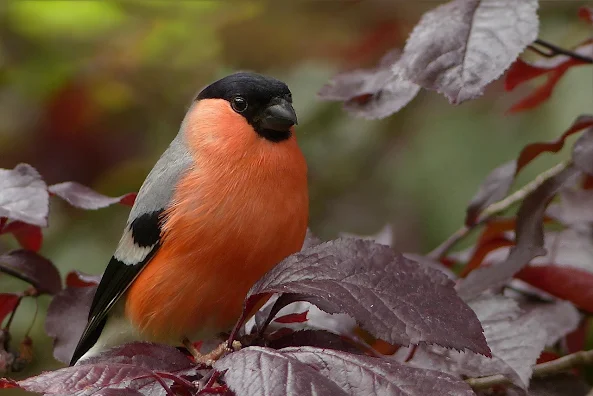
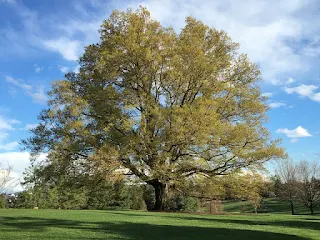
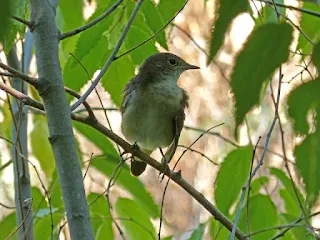
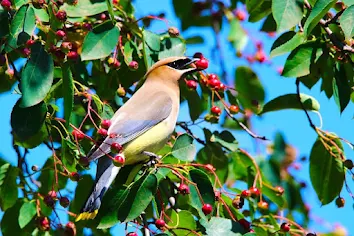
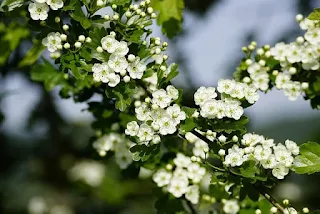
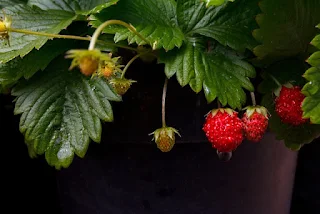

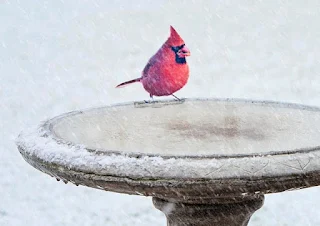

No comments:
Post a Comment